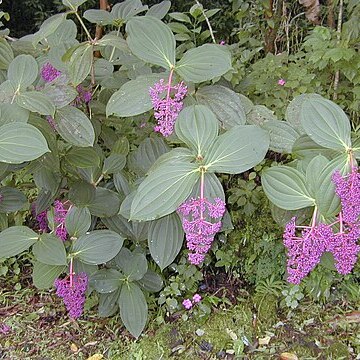Small trees, or erect or scandent shrubs, terrestrial, epiphytic, or rarely climbing. Stems 4-sided or terete, sometimes succulent or corky. Leaves opposite or verticillate, petiolate or sessile; leaf blade usually glabrous, margin entire or dentate. Inflorescences terminal or axillary inserted on leafless stems or at nodes of root stock, cymose or cymose paniculate; bracts small, caducous. Flowers 4(-6)-merous, pedicellate and sometimes bracteolate. Hypanthium cup-shaped, funnel-shaped, campanulate, or tubular. Calyx lobes conspicuous or inconspicuous, apex apiculate. Petals obovate, ovate, or suborbicular, sometimes oblique. Stamens 2 × as many as petals, whorls equal or slightly unequal in shape and length; anthers linear, lanceolate, or oblong, base tuberculate or appendaged, apex beaked, dehiscent by a single pore; connective slightly decurrent forming a spur. Ovary inferior, ovate, apex truncate or with a membranous crown, sometimes septate. Berry globular, ovate, or often urceolate, apex indehiscent. Seeds numerous, obovate to shortly cuneate, small, glabrous or tuberculate.
Lianes or scandent shrubs, sometimes epiphytic, occasionally small trees. Leaves 3–9-veined; petiole generally short to moderate. Inflorescences terminal, axillary or cauline, paniculate, cymose, umbellate or corymbose, often with conspicuous coloured bracts and bracteoles. Flowers usually 4-or 5-merous. Hypanthium campanulate or ovoid, glabrous. Calyx lobes relatively indistinct, as short teeth or absent, persistent in fruit. Petals ovate to obovate, pink to white. Stamens 8 or 10, isomorphic or sometimes anisomorphic; anthers linear to curved, sometimes somewhat rostrate, with a terminal pore; connective not or shortly prolonged, with a short dorsal appendage and a short ventral appendage, or ventral appendage absent. Ovary usually 4-or 5-locular, the summit glabrous; ovules numerous on axile placentas; style filiform. Fruit fleshy, indehiscent. Seeds numerous, small, semi-ovoid to semi-obovoid, minutely tuberculate.

